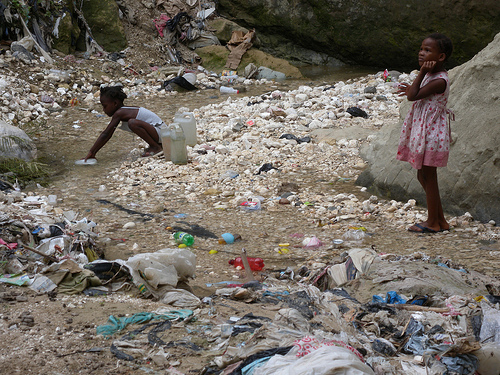Study finds two ways to forecast cholera outbreaks


Cholera has always been a disease to fear. The water-borne disease can take a person from apparent health to death in one day and kills 100,000 people a year.
But a new study released Tuesday points the way to predicting cholera outbreaks months in advance: look for a rise in average temperatures and in average rainfall.
The study, which focused on Zanzibar, Tanzania, found that an increase of just one degree Celsius (two degrees Fahrenheit) in the average monthly minimum temperature in a cholera-prone area was associated with a doubling of cases within four months. Also, a 200-millimeter jump in monthly rainfall totals in an at-risk region presaged a 60% surge in cholera cases within two months.
Traditionally, public health officials have only known of outbreaks once they are already underway, at which point it is too late to vaccinate large swaths of the population and people have already started dying.
But these findings could form the solid basis of a cholera forecasting system, say the researchers from the International Vaccine Institute in Seoul, Korea. In a press release, Rita Reyburn, a Research Associate at IVI and the study lead author, said:
"We are getting very close to developing a reliable forecasting system that would monitor temperatures and rainfall patterns to trigger pre-emptive measures—like mobilizing public health teams or emergency vaccination efforts—to prepare for an outbreak before it arrives."
Endemic to tropical areas such as sub-Saharan Africa and South and Southeast Asia, cholera infects people who ingest water or food contaminated with the bacterium Vibrio cholerae. The infection then causes severe diarrhea, which leads to dehydration and -- if not treated in time -- death.
Cholera spreads easily in areas that lack clean water and have poor sanitation because it is often transmitted through water or foods contaminated with fecal matter from an infected person. According to the World Health Organization, it afflicts three million to five million people a year.
In recent years, cholera outbreaks have gone from lasting a few weeks to many months, such as the outbreak in Haiti which began last year.
The study, which was published in the American Journal of Tropical Medicine and Hygiene, showed that cholera cases doubled when the average minimum temperature increased from 23º C/73ºF to 24º/75º. As climate change brings the hotter and wetter conditions that are the perfect petri dish for cholera, the authors expect the number of cases to swell.
Climatologists predict that average global temperatures could climb between 1.4ºC and 5.8º C over the next 100 years.
Photo: Flickr/waterdotorg
[via The Guardian]
This post was originally published on Smartplanet.com